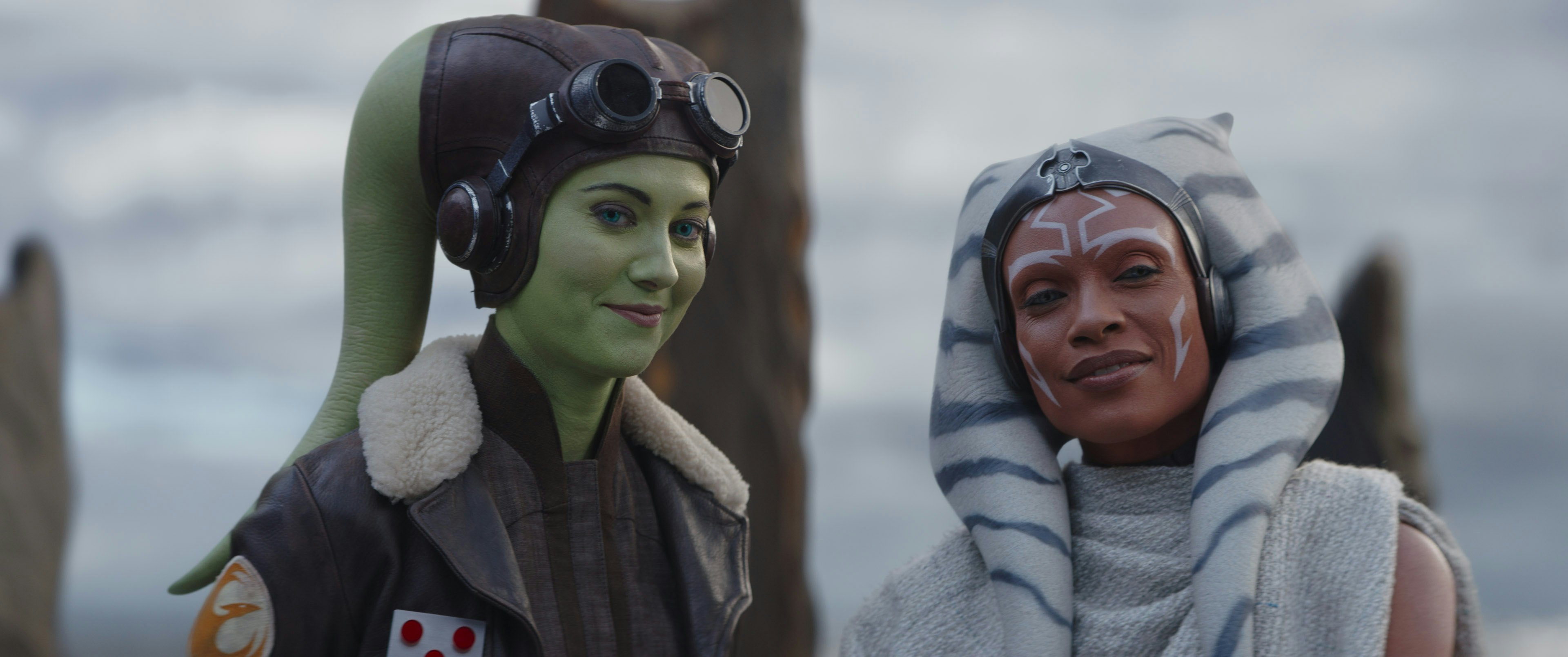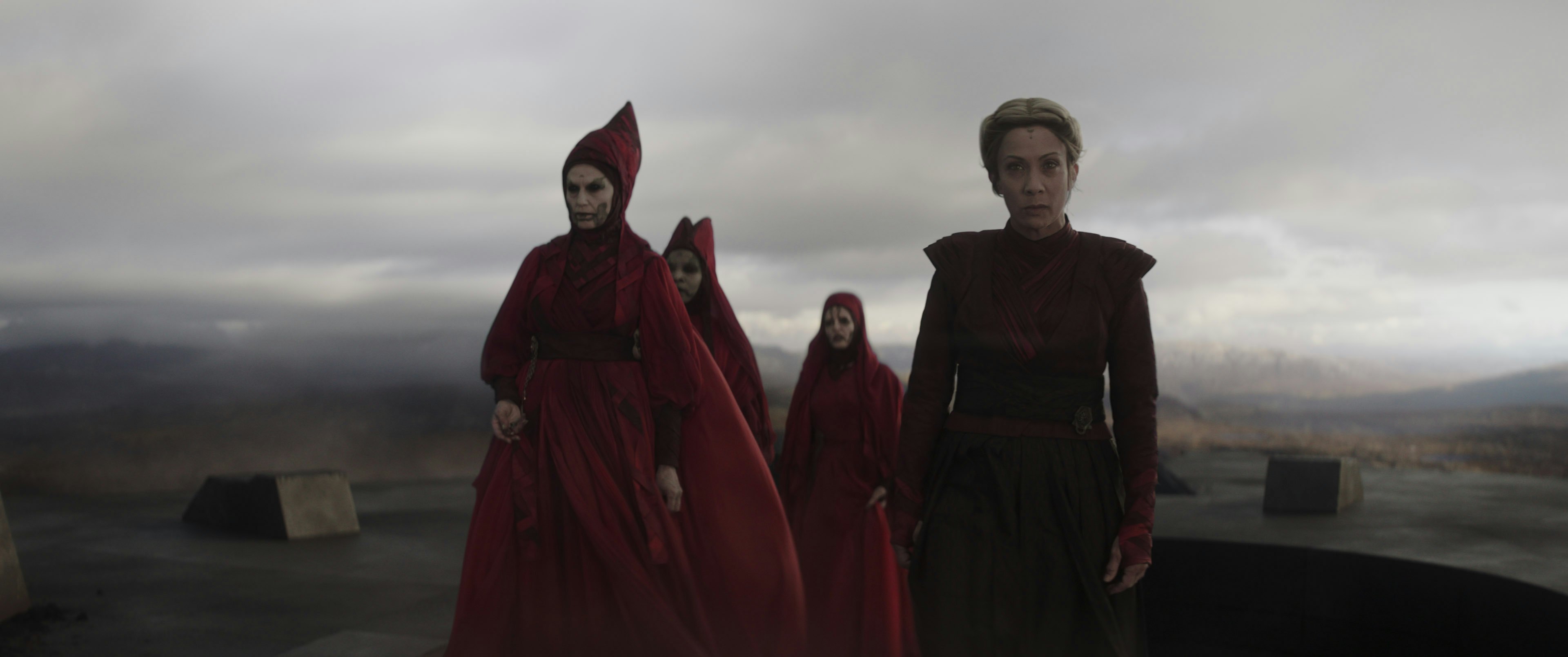
Admittedly, Ahsoka had a lot working against it. It never seemed prudent to continue a decade-long animated adventure in live-action. It’d be similarly difficult for casual fans — most of whom hadn’t seen a lick of The Clone Wars or Rebels, and who only had a vague knowledge of Anakin Skywalker’s erstwhile padawan — to get on board. If the growing serialization of Marvel Studios projects is teaching us anything, it’s that audiences don’t actually want to read an explainer or watch a recap to understand what’s happening in their favorite franchise.
Despite its obstacles, Ahsoka did have an ace up its sleeve. It’s the first Star Wars project with a predominantly female cast — yes, even after 40 years, 11 films, and half as many shows. Three of Ahsoka’s protagonists are women; impressively, two are women of color. And with the addition of villains like Morgan Elsbeth and the return of the Nightsisters, Ahsoka had a unique opportunity to center its story on the most diverse ensemble in franchise history.
The series inadvertently became the “girl power” show on that premise alone. And while Ahsoka Tano and Sabine Wren were definitely doing a lot of girl-bossing in Ahsoka’s two-episode premiere, something still seemed off. Series creator Dave Filoni brought casual audiences up to speed with plenty of exposition, but the majority of it rested on our heroines’ shoulders. It was up to Ahsoka, Sabine, and fellow Rebels alum Hera Syndulla to fill everyone in on the threat that Grand Admiral Thrawn still posed to the galaxy, the void that hero Ezra Bridger left in the Rebellion, and the shadow that Darth Vader — aka Anakin Skywalker — casts over Ahsoka’s future.
But sadly, Ahsoka wasn’t exactly passing the Bechdel Test.

It’s not great to watch so many powerful women — some warriors, some even powerful witches — sit around talking about the men in their lives. Few conversations end without at least a mention of one (sometimes two!) of these male characters. While the first half of Ahsoka did well to establish tension in the dynamics between Ahsoka and Sabine, or Sabine and her rival Shin Hati, it wasn’t enough to offset the series’ hollow emotional core.
Even before Thrawn, Ezra, or Anakin make their respective appearances in Ahsoka, they’re still looming figures in the series. They’re the very force that keeps the story moving, and each serves as motivation for Ahsoka’s female characters. Each of our heroines are defined, in some way, by the men of their past: Hera by a loss that Rebels fans know well, Ahsoka by fear, Sabine by anger. And that would be pretty compelling, if it served as more than just a plot device for the series.
It gets worse once Ahsoka does add Thrawn, Ezra, and a trio of Nightsisters to the mix. Ezra doesn’t feature as prominently in the final episodes, which does give Sabine a lot more room to come into her own — but Morgan Elsbeth and the Nightsisters essentially exist to do Thrawn’s bidding. Even Shin Hati is attached to her master, Baylon Skoll; until he leaves her high and dry in Episode 7, she mostly serves as his sounding board and occasional attack dog.

This wouldn’t be the first time a Star Wars story used women to prop up male characters. While Leia Organa is a welcome exception — despite being “the girl” on an all-men crew — the franchise has yet to match her strong characterization since. The prequels had Padmé Amidala, a formidable politician that became a pawn in Emperor Palpatine’s nefarious scheme. Rogue One had Jyn Erso — a fierce warrior with plenty of pathos, but one that was defined by her relationship to her estranged father (and was, once again, surrounded by dudes).
The list goes on: from Solo to the sequels, no Star Wars story has really managed to create a strong female ensemble, or give any female character a real sense of autonomy. Ahsoka might come closer than any live-action project has before, though it still falls short of the substance that its characters deserve. Some of the series’ best moments manifest in duels between Morgan Elsbeth and Ahsoka, or Shin Hati and Sabine. In those brief match-ups, no one is thinking about their responsibility to their respective master. No one’s talking about it, either. It certainly fuels their motivation, but the winning or losing is the only thing that matters in the moment.
If only every moment in Ahsoka had that same sense of urgency. The series did have its work cut out for it, but it also had a whole lot of potential. In some ways, it did succeed in bringing animated stories into live-action, but it did so at great cost to its most interesting characters. Their adventures will continue in future Star Wars stories; hopefully with a bit less emphasis on the past and more on their futures.







